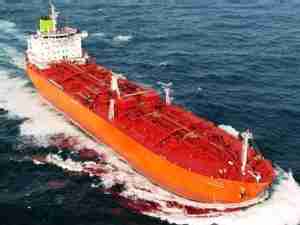"For the first time you are getting into serious bulk carrier deliveries now," said Martin Stopford, managing director of Clarkson Research Services.
"Bulkers are extremely challenging...they are going to have their work cut out," he told reporters on the sidelines of a shipping conference.
While rates for dry bulk vessels have recovered from record low levels seen in 2008 when global turmoil battered earnings, analysts say the seaborne sector still needs to see a stronger pick up in global demand for key commodities such as coal and iron ore.
"There is so much supply and the underlying demand growth is not that brilliant," Stopford said.
For dry bulkers above 10,000 deadweight tonnes (dwt) Clarksons estimated 77.2 million dwt would be delivered in 2010 compared with 43.5 million dwt in 2009 and 24.4 million dwt in 2008. It forecast 74.3 million dwt would be delivered in 2011 with 66.1 million dwt estimated in 2012.
"We are still not being told about large numbers of decisive cancellations," Stopford said.
Capesize Vessels
Average earnings for capesize vessels -- the largest class of dry bulk ships -- have dropped to $41,648 a day from their peak of $233,988 a day in June 2008.
"I am a bit surprised that the capes market is still coming in at $20,000 to $30,000 a day...at today's capital costs it's not a bad rate at all. It's not what you were getting."
Stopford said the tanker market was "looking a bit shaky".
"It's not impossible that you end up having a difficult last quarter," he said.
Average earnings for very large crude carriers (VLCCs) on the benchmark Middle East Gulf to Japan route have slid to below $4,000 a day since Wednesday, the first time since September last year.
They have hovered around the operating cost level of $10,000 a day in recent weeks as VLCCs return from floating storage due to the end of a trading play, which at one point saw more than 100 million barrels stored at sea.
Many analysts say sluggish demand for crude oil, worries over economic recovery and rising fleet supply will pressure VLCC earnings in 2011.
"We are seeing a lot of tonnage being delivered this year and next year on dry and tankers. People have a too optimistic view on cargoes," Joep Gorgels, head of transportation West-Europe with ABN AMRO, told Reuters at the conference.
"The outlook for those areas for the next two or three years is quite low." (Reuters)










